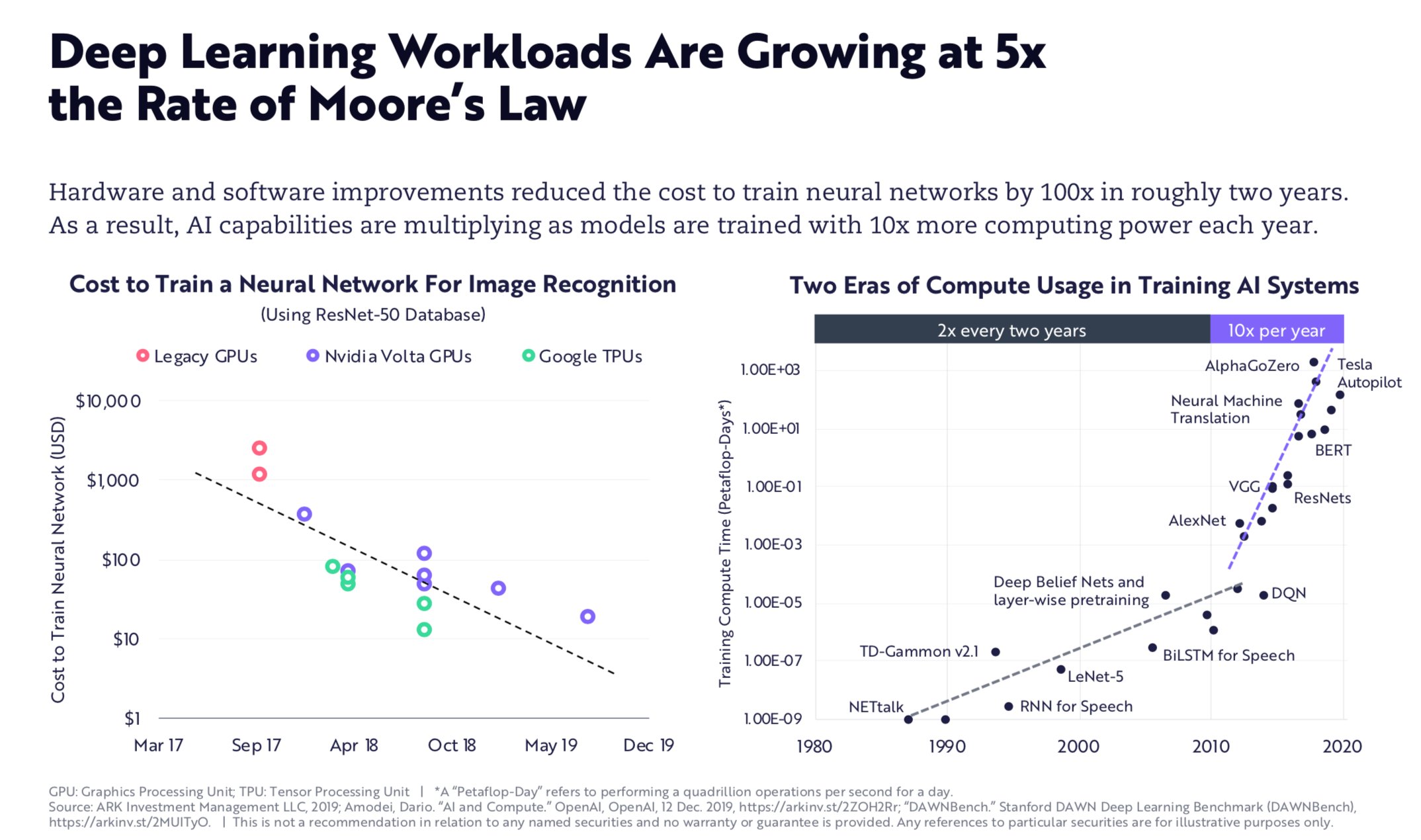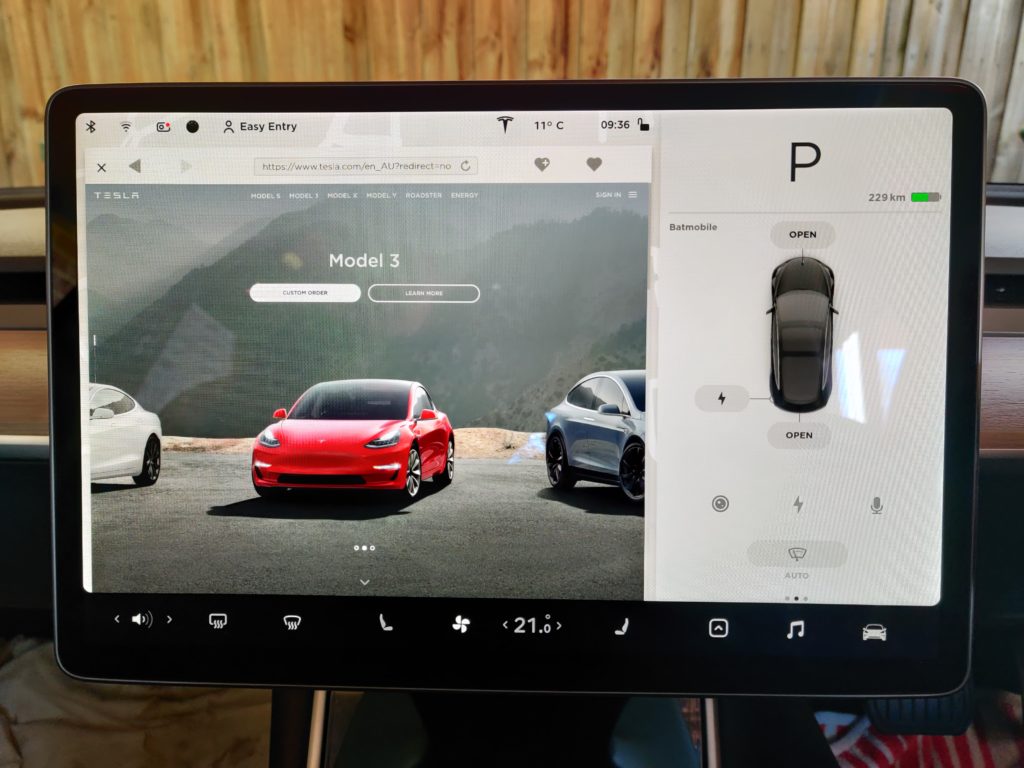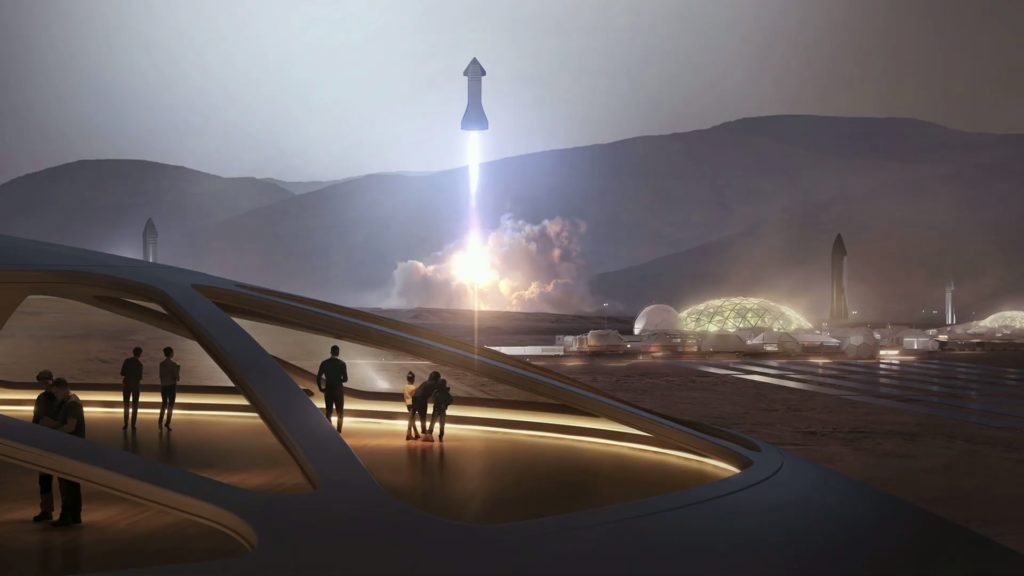Excited about future tech? If you’re reading this it’s reasonably likely you are but in case you’re not, today I’d like to double down and really dig into tech and “the future”. Specifically I want to look to next year, 2021, and detail some specifics as from what I can tell, it’s going to be a truly watershed moment in technology advancement.
Predicting the future is fraught with danger, but through carefully tracking and extrapolating out previous long term trends we can get a very accurate idea. This is especially true when you’re talking about the very near future like we will be today.
For example back in 2018 I predicted that flagship mobile phones in 2020 should have 120 Hz screens, 3.2 GHz CPU clock speeds, 8-10 GB of RAM, 4,000-4,200 mAH batteries and possibly record video at 8K. Looking at the Galaxy S20+ 5G that’s now been released it has a 120 Hz screen, a 2.8 GHz CPU clock speed (so 14% off), 12 GB of RAM, a 4,500 mAH battery and records 8K video.
So why 2021? Why am I discussing the tech future that’s just 1 year away rather than say, 5 or 10 years out? Well although it is easier to predict and be right when you’re only looking one year out, as said, I believe it’s going to be a monumental year.
For a long time now I’ve been building, updating and tracking a number of disruptive and exponential technologies. In the document there are specific tipping points that I’ve delineated as well as “emergence” points too.
This is because generally technology follows the famous “S” curve as seen below. Things start out slow, growing very gradually with essentially no one noticing. Eventually things reach say, 1% adoption and then 3% adoption.

Around 3%+ adoption is where the “Early Adopters” start to take notice and you can see the technology actually out in the real world, doing real things. This is what I refer to as “emergence points” or a technology “emerging”. It’s not quite mainstream, it’s not everywhere or being used by your grandparents but it’s real, it’s in the world and most importantly, it signals that the vast majority of adoption is going to take place over the next 1-5 years.
2021 Will Be The Year Of Emergence
This emerging of a new technology is why I’m focusing on 2021 today. Usually when a new technology starts to emerge it does so on its own. Back in 2012, consumer drones started to emerge with the hobbies and DIY community before 2013 when DJI launched their first drone, the DJI Phantom. As they say, the rest is history but when this all happened there wasn’t really any other technology also emerging at the same time.
There was existing technology getting better – such as GPU’s, HDD’s, phones and WiFi 5 – but these weren’t new. They were just iterations of existing stuff. Next year though we are scheduled to see four monumental technologies start to properly emerge from the lab or the “no one notices” stage.
These technologies are:
- Clean Meat
- Artificial General Intelligence (AGI)
- Transport as a Service (TaaS) or Autonomous Cars
- Space Transportation Systems
Clean Meat

Let’s start with Clean Meat. The industry started way back in 2013 when Google co-founder Sergey Brin’s family foundation funded Mosa Meat, leading to them launching the world’s first cultured meat hamburger. This first hamburger cost roughly $330,000 USD. Given a decent hamburger patty is around 165 grams, that’s a price of about $2,000,000 USD per kilo.
Fast forward to 2017 and Mosa Meat crushed that cost to around $5,280 USD per kilo. Now in 2020 it sits at about $155 USD per kilo. By contrast, a kilo of normal beef mince in the USA costs around $10 USD giver or take. That’s a 280% reduction in costs each year, so even if we’re generous and assume that they won’t be able to keep 280% up, and instead predict costs out at a 200% reduction, we’ll be seeing clean meat costing about $30-$60 USD / kilo in 2021.
That’s still obviously way more expensive than your normal, everyday meat you get at the butcher or grocery. But at those more “sane” like prices – as opposed to $5,000 / kilo! – it’s very likely that we’re going to start to see it pop up in real, legit businesses around the world here and there.
By 2022 prices should be around the $15-$30 USD / kilo and there have already been public announcements from companies saying they’ll have products on shelves. Beyond 2023 the proper tipping point for Clean Meat will happen with prices dipping below what current traditional meat costs.
From here it’s expected that consumers will more and more vote with their wallets, buying the far superior – and by then cheaper – product rather than murdering animals that are bathed in antibiotics their whole life.
Artificial General Intelligence (AGI)

Many already know of AI or Artificial Intelligence. Although the field itself has been around for decades AI really started to take off with Deep Neural Networks, high powered – and cheap – consumer GPU’s as well as critical progress in image recognition tasks.
What most don’t know though is that virtually all the AI’s you see and hear about today are ANI’s or Artificial Narrow Intelligence. This is an AI that is good – perhaps super human – at just one specific thing. It might be directing you to point B on a map, playing chess or turning your drunken slurs into text so Alexa can do whatever the hell it is you’re trying to tell her to do.
AGI on the other hand is AI that can be good or superhuman at multiple things all at once, similar to a human. For example Deep Mind built a single AI program that is super human at 57 Atari Games this year. Beyond that we have the very recent announcement of OpenAI’s GPT-3 which seems to be showing very early stages of AGI. It can not only write convincing and top level blog posts, but write fan fiction in the writing style of anyone from Harry Potter to Dr Seuss and even write basic HTML code given normal language descriptions of what you want that HTML to do.
AI is also one of the most exponential technologies out there. It doesn’t just scale fast, it scales unfathomably fast. We’re not talking about the “usual” 10x improvements over a decade or so. The graph below really drives home just how absurd AI’s growth has become, especially over the past 10 years.

You thought computers grew quickly and got faster and faster every year back in the hay day when Moore’s Law was at its peak? AI is growing five time faster than that! In just 3 years costs plummeted 100x. Algorithms are using 10x the amount of processing power and on the software side we’ve seen even bigger improvements.
AI makes computer development look like a turtle and right now, in 2020, we’re already seeing the first glimmers of AGI coming out. By the end of next year GPT-4 will no doubt be out with 10x more parameters than GPT-3 (so around 1.75 trillion) and given the monumental leap GPT-3 made over GPT-2 it’s highly likely we’re going to start to see some more concrete, legitimate “intelligence” shine through.
Of course it won’t be 100%. Of course it won’t be able to do every task a human can do. It’ll make stupid mistakes, write dumb things like “horses have four eyes” but it will be emerging… on it’s way up that S curve and likely to get deployed in some cutting edge products. Only the arrogant underestimate AI and hell, GPT-3 has already been used to produce online blog posts that ended up at the top of Hacker News!
TaaS or Autonomous Cars

Next we have TaaS or self driving cars. While Elon Musk has continued to claim that we’ll see “FSD” by the end of 2020 it doesn’t quite seem like it’s going to happen. Then again, he has been getting a lot more accurate with his “Elon time” lately! Even if it did, I doubt very much his definition of Full Self Driving is what most others consider self driving cars.
While technically the car is driving itself – something it does currently very well already – you can’t fall asleep in the back while it does it and it doesn’t drive 100% of the way. Now to be clear, I don’t think you’ll be able to legally fall asleep in the back of a Tesla by 2021 either, I do however think the technology is poised to take a critical step forward where Tesla’s essentially just drive them selves near 100% of the time.
Again, 2021 won’t be the tipping point for TaaS, that will likely be a year or two after, but it will really hit home quite strongly. The millions of Tesla owners will be able to get into their cars, point it to a place on the map and sit there (monitoring) while it chauffeurs them 100% of the way without any interventions.
This will mean countless YouTube videos of people being driven to work, home and all manor of other places entirely without intervention. It’ll still make mistakes, human oversight will still be required and idiots will still crash. But it will be the emergence, the beginning of true self-driving cars on the road and in the public’s hands
From there the AI should converge faster and faster, improving exponentially until it can drive near perfectly in any and all scenarios. MobileEye has also come out and stated that they’ll be launching a Level 4, geofenced autonomous ride-taxi service in Tel Aviv in 2022 so this won’t just be limited to Tesla’s either.
Space Transportation Systems

Finally we have SpaceX and their new rocket ship, Starship. I’ve covered this technology in great detail already with my post on As A New Space Era Dawns, No One’s Paying Attention so I won’t go into too much detail. Suffice to say, SpaceX is building their Starship spaceship and it’s phenomenal.
While many might just shrug it off as just another spaceship, it’s exceedingly clear that this time it’s vastly different. Besides being the biggest, most powerful rocket ever, Starship will be fully reusable and rapidly so.
What does “rapidly” mean exactly? Multiple launches per day.
Starship is best thought of more like a modern plane rather than a rocket. It doesn’t crash into the ocean or drift off into space after each flight, it lands. It then gets checked over, refuelled and launched again just like that A380 you took way back before Coronavirus ruined everything for everyone.
Beyond being able to launch, land, refuel and launch again multiple times per day, Starship isn’t the only thing being built. The Starship factory is being built right beside it, capable of cranking out new Starships roughly every week or so, continuously.
Eventually SpaceX will have literally dozens of Starships in stock, who knows how many launches happening per day and likely dozens of Starships floating around in orbit of either Earth, the Moon or even Mars.
While the full development of Starship and it’s booster Superheavy will likely take until around 2022 (or longer), 2021 should see full, orbital class test flights of the full stack Starship space transport system. This is why I’m including it in this 2021 emerging tech post as it should have gone from a presentation slide, all the way up to a fully working, in real life product.
Given last time Elon put a Tesla Roadster into deep space while testing the Falcon Heavy’s orbital flight capabilities, it should be hilarious to see what he does this time around. Starship can launch 100 tonnes into orbit, for comparison that’s almost four Boeing 737 planes. Then again, perhaps he’ll go for something a little more mature and launch 400 Starlink satellites.
2021: A Year To Truly Look Forward To

It’s no great secret that 2020 has kind of been a shit show. Even if you haven’t lost your job from COVID-19 you’ve likely had to stay inside during lock down, cancel your travel plans, had half your country burnt down, had half you country protesting police brutality or worse. It’s not our best moment.
So hopefully this piece has given you hope that not only will 2021 likely see significant progress towards the approval of a COVID-19 vaccine as well as its widespread distribution, but four astonishing human technology achievements too.
An emergence of multiple civilisation changing technologies all at once! The huge meat industry beginning the switch to clean meat that’s better for the planet, better for our health, better for the animals and better for antibiotic resistance. The first general intelligence steps of what will no doubt be considered a new species, AI, that we will live and interact with at higher and higher levels over time.
The decline of millions of people dying in automobile accidents as well as a huge boost to the conversion from old, fossil fuel burning clunkers to more efficient, clean, healthier and better EV’s that drive us around autonomously like royalty. And finally the pivotal first step at humanity really stepping out into the stars with speed and scale. No more billion dollar launch costs, launching small cargoes a handful of times per year. Over the next 5+ years Starship should eventually launch tens of thousands of times per year, moving vast amounts of critical infrastructure to the Moon and Mars creating our first colony.
They say it’s always darkest before the dawn… I for one am absolutely ecstatic waiting to see just how bright 2021 will shine. What are you looking forward to most?
The benefits include: 1) How to get those silky smooth videos that everyone loves to watch, even if you're new 2) How to fly your drone, from taking off to the most advanced flight modes 3) Clear outlines of how to fly with step-by-step instructional demonstrations and more 4) Why flying indoors often results in new pilots crashing their drone 5) What other great 3rd party apps are out there to get the most out of your drone 6) A huge mistake many pilots make when storing their drone in the car and how to avoid it 7) How to do all of these things whilst flying safely and within your countries laws.




